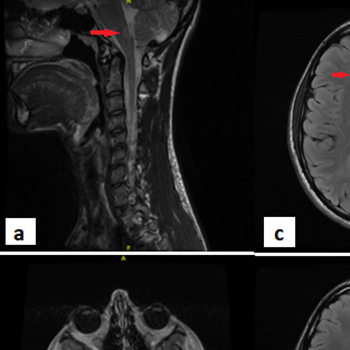Keywords
Multiple sclerosis, dysarthria, dysphagia, Computerized Tomography in Diagnosis of Left Ventricular Aneurysm., bulbar symptoms
Abstract
Multiple sclerosis (MS) is a complex multifactorial disease with different clinical manifestations. Bulbar symptoms such as dysarthria and dysphagia are common in MS patients with advanced secondary progressive disease. However, they are not common at disease onset. We present the case of a 17-year-old male who initially presented with vomiting, dysarthria, and dysphagia. The investigations led to the diagnosis of MS, with an active lesion in the brainstem, more specifically in the area postrema region. Differential diagnoses were eliminated. The patient received intravenous methylprednisolone resulting in amelioration of symptoms. Treatment with fingolimod was started after discharge. The recognition of MS with atypical onsets is important to make an early accurate diagnosis and prescribe appropriate treatment for a disease known to be one of the most common causes of neurologic disability in young adults.
References

Views: 597
HTML downloads: 191
PDF downloads: 413
Published:
2022-05-18
Issue:
2022: Vol 9 No 5
(view)










